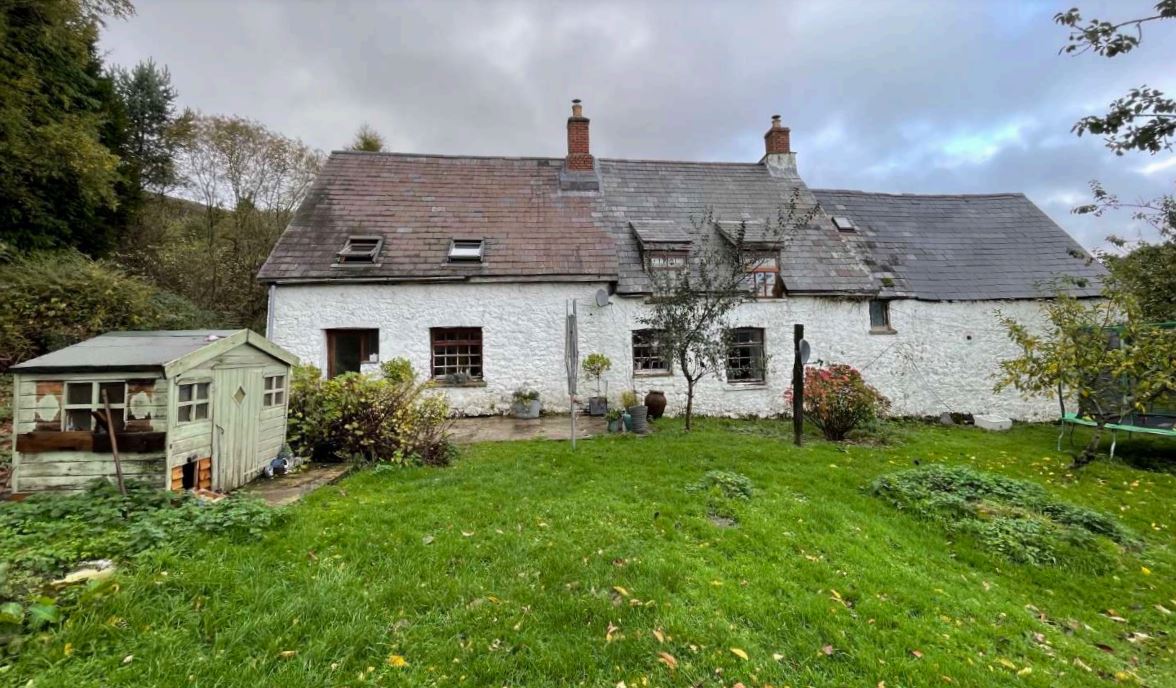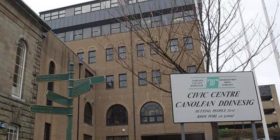Welsh 16th Century ‘Longhouse’ Set for Repair and Refurbishment

A TRADITIONAL Welsh ‘longhouse’ dating back to the 16th or 17th century, and close to an ancient pilgrimage route, is to be repaired and refurbished.
The grade II listed Llanderfel Farm on a southeast slope of Mynydd Maen above Cwmbran, and within the original ‘green belt’ of the new town, was listed in 1987 but, according to documents submitted to Torfaen Borough Council, “fell into a poor condition some time towards the end of the 1990s”.
Applicants Matthew and Mair Davies has been given listed building consent to carry out the repairs and demolish a “very poor quality” lean-to in the courtyard of the building that dates from 1920 and is described as having a “negative impact on the setting of the listed building”.
It will be replaced with a single storey flat roof store with an open porch.
Other changes include replacing “unsympathetic” plastic rainwater goods with cast aluminium described, by Torfaen Borough Council planning officer Rebecca McAndrew, as “an enhancement”.
Other 20th century and recent adaptations to the two-unit longhouse will also be removed, including dormer windows, as part of the refurbishment also intended to improve energy efficiency.
Ms McAndrew said in her report: “Overall, the building’s significance and character would not be compromised by the proposed works. The scheme is a sensitive renovation of a historic building which has fallen into disrepair and been the subject of unsympathetic works over the years.”
The application included detailed history of the farmhouse and its proximity to the ancient Llanderfel Rhiw pilgrim route that forms part of the pilgrim way from Llantarnam to Penrhys,in the Rhondda, which runs through part of what is now Llanderfel Farm.
The adjacent land is no longer farmed but the original longhouse, so named because they were a single, long, low, oblong building, would have housed the family and its cattle.
According to the application documents Llanderfel has an association with medieval Christianity and the early Celtic church.
The nearby ruins of Llanderfel Church, a scheduled ancient monument, date back to the late 11th or early 12th Century and was a site of pilgrimage during the 16th century.
It is believed that there may have been a church on this site from as early as the 6th Century and is likely to have been founded by Celtic chieftain Derfel Gadarn, also known as St Derfel.
The early ‘Celtic’ church at Llanderfel is set in a huge semi-circular enclosure which would have originally provided land for a few monks to live on and would have also provided accommodation for pilgrims.
In 1179, around the same time as the construction of Llanderfel church, a Cistercian Abbey of the Blessed Virgin was founded in Llantarnam by Welsh Lord of Caerleon, Hywel ap Iorwerth. Subsequently, a shrine dedicated to the Virgin Mary was established in the grange of Penrhys abbey. The connecting route became a significant pilgrimage during the late medieval period and is still a popular walking path.
Though the house, which is accessed via a private lane, is in private hands the application acknowledges “the significance of the public right of way and its association with the ancient pilgrimage route does give this property some community value.”
It is also stated its position with the green belt, considered a buffer following the creation of the new town in 1951, has “provided some protection against encroaching residential areas” and the “fortuitous location” has preserved its character “in an area which has largely been taken over by newer development”.
By BBC LDRS
Spotted something? Got a story? Email News@News.Wales











